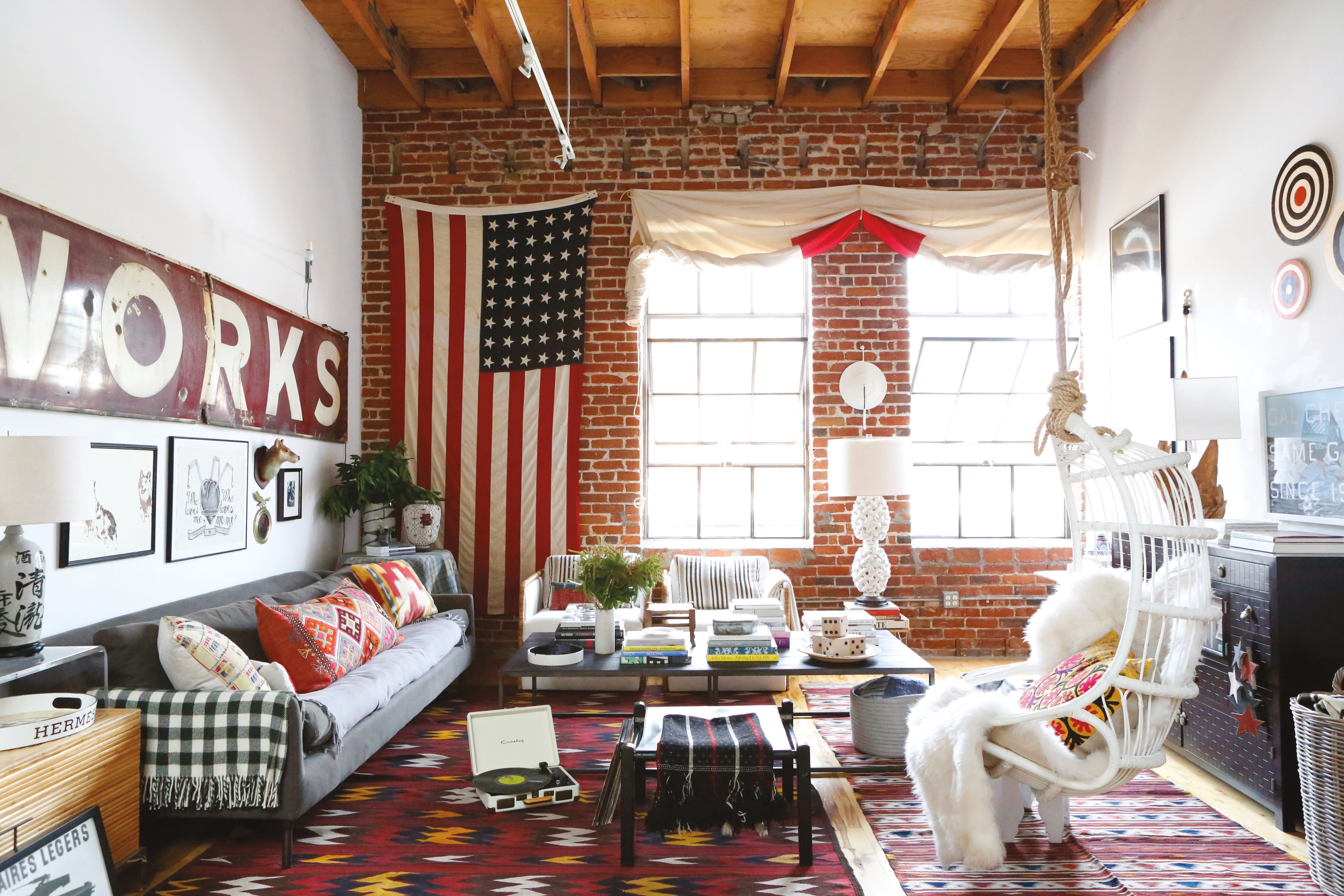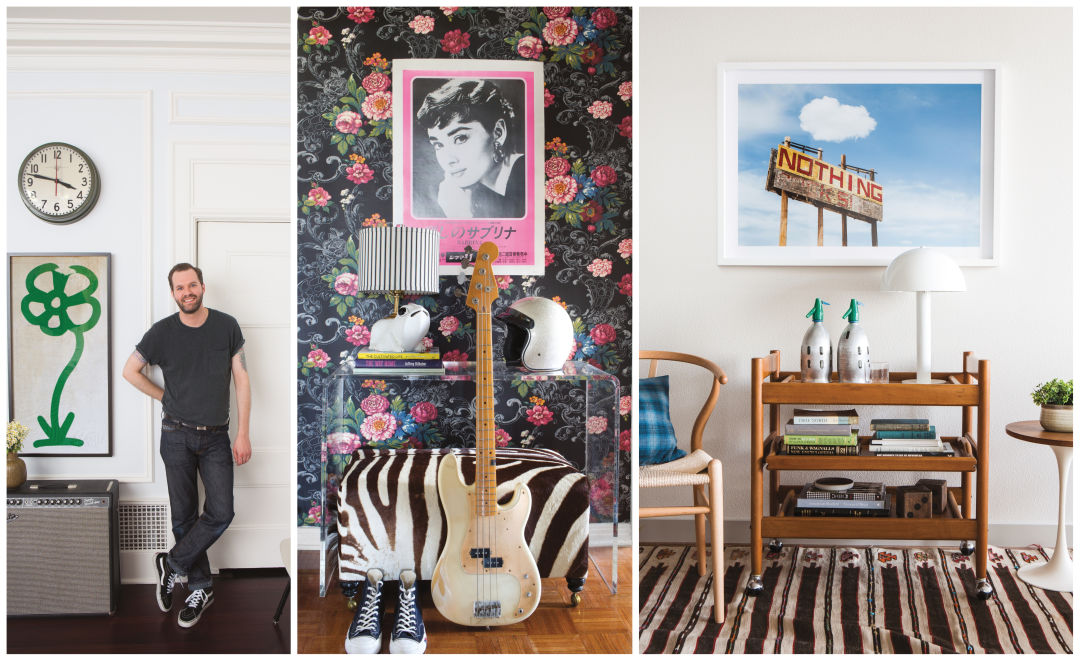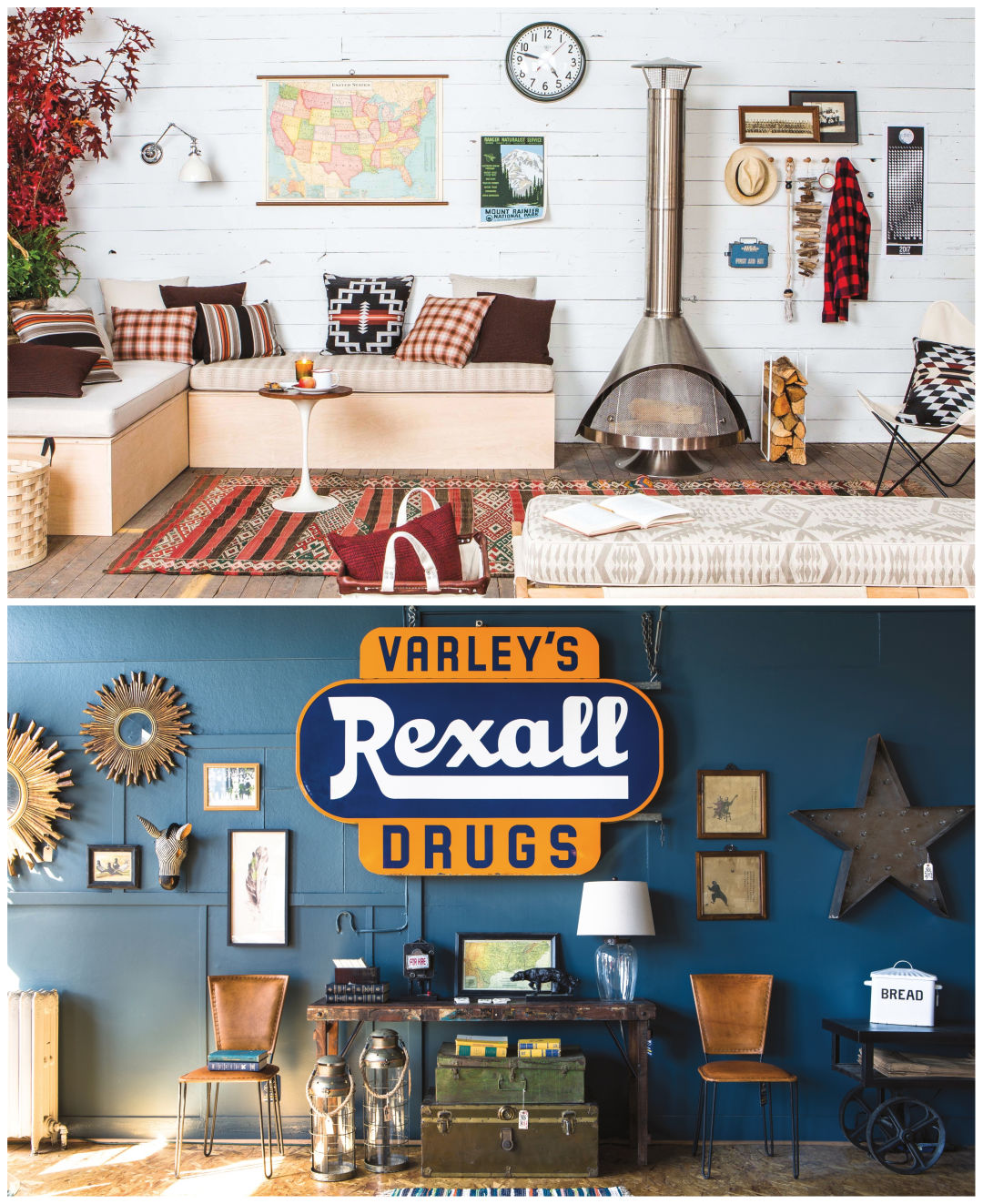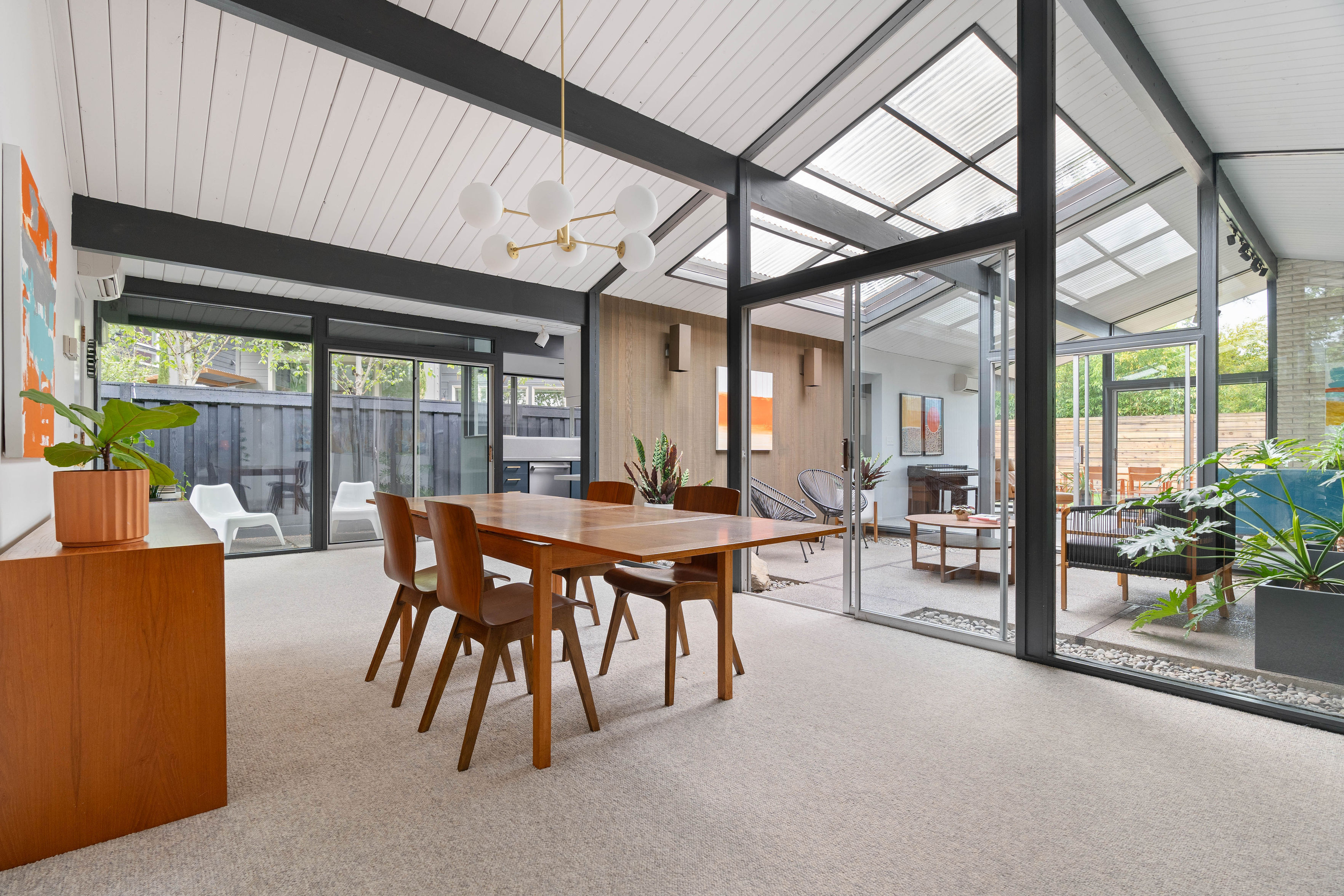
How Portlander Max Humphrey Creates Color-Happy, Boldly Patterned Rooms
Animal prints vying with geometric patterns. Gingham curtains lit by a Chinese lantern. Canary yellow lamps on a sleek black cabinet. The clients of Max Humphrey, a Portland interior designer, need to be “ready for some happiness,” as he puts it. His general strategy of bold color accents and layered, competing patterns gives a little playful jolt to the Pacific Northwest’s traditional preference for chilled-out earth tones.
Even so, he’s recognizably regional.
“Somebody called me Pacific Northwest Americana the other day,” he says—both true and slightly ironic, since Humphrey’s work draws on a hodgepodge background and a biography chopped between both coasts, culminating in an intentional adoption of Portland design culture. In a time of mass movement in our direction, that may make him a perfect “local” designer for right now.
In past lives, Max Humphrey worked in television production, played bass in a touring punk band called the Adored, and worked his way up, with no experience or qualifications, from entry level to partner at an LA-based interior design firm.
Now he runs his own interior design business in Portland. What brought him here? “The gold rush? Manifest Destiny? Westward expansion?” he jokes.

From left: Humphrey in his adopted (and adapted) Portland habitat; a Humphrey design in a historic art deco LA apartment, with wallpaper from Anthropologie; a Southeast apartment, with a photograph by Seattle’s Paul Edmondson and lamp by Schoolhouse Electric
Image: Christopher Dibble and Courtesy Sarah Dorio
In fact, he was driven by that historically powerful motivator: a desire to leave Los Angeles. His first move was to make contact with all the Portland designers he admired and ask to take them out for coffee. “I knew I would have a learning curve, and I didn’t want to assert myself as an Angeleno in Portland—there’s a sensitivity about that,” he says, perceptively. “I wanted to get to know the city.” Those e-mails yielded meetings with the likes of Casework’s Casey Keasler and Bright DesignLab’s Leela Brightenburg and Alissa Pulcrano, among others. “The first thing you find out is how humble Portland designers are,” he notes.
He built up his clientele through word of mouth. He describes much of his work here as “high-end residential interior design,” though he’s also done commercial work and styling work, most visibly in the City Home stores in the Pearl and the Central Eastside Industrial District. His growing stack of press clippings includes Architectural Digest, Dwell, and the Wall Street Journal. Sunset invited him to speak at its annual conference in Sonoma.
“It’s hard to mix old and new and have it look right,” says Kim Pelett of City Home. “Most people do one or the other. Max will have a contemporary sofa with an antique sign straight out of a 1940s carnival.”

From top: a tableau created to showcase Pendleton’s collaboration with the fabric brand Sunbrella; the Southeast Portland location of City Home (the Rexall sign has since moved to the shop’s new Pearl District location)
Image: Christopher Dibble
Before rising professionally in California, Humphrey grew up in New Hampshire. In Portland he channels his various roots into the sensibilities of his adopted home. “One thing that I really looked forward to is bringing some color here, some layers and some pattern,” he says. “Portland is very respectful. People feel like you need to respect the landscape a lot, and I agree, but you can also bend the rules a little bit and shake things up.”
“I’ve found that my clients in Portland, especially, are very collaborative,” he continues. “They want to be involved. They want to know where stuff is coming from, and go shopping and be a part of it. It’s not just a turn-over-the-key thing, where they go to St. Tropez for six months and come back to have it all done with candles burning.”
Residential design—his clients have included executives at the likes of Nike and Intel—has been his calling card to date. But he aspires to take his hybridized style further, in directions very much inspired by his city. “I’d love to design for the Timbers. Maybe they need one of their locker rooms redesigned?” he wonders. “I’d love to design a coffee shop. This is the place for it. I’m designing a dentist’s office in LA right now, and the reception will look like a coffee shop, because this may be my only chance.”




